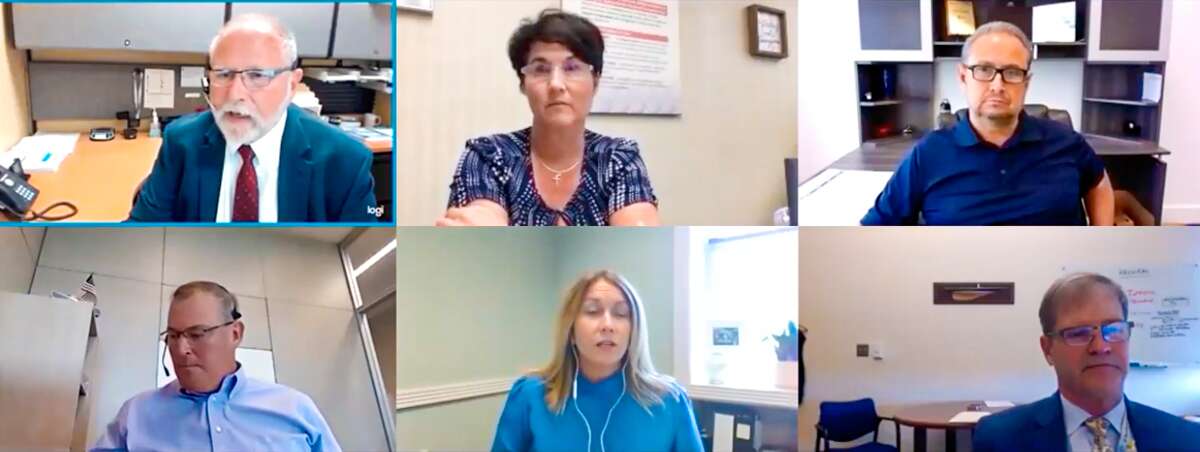
Health care providers help employers find a safe return to business
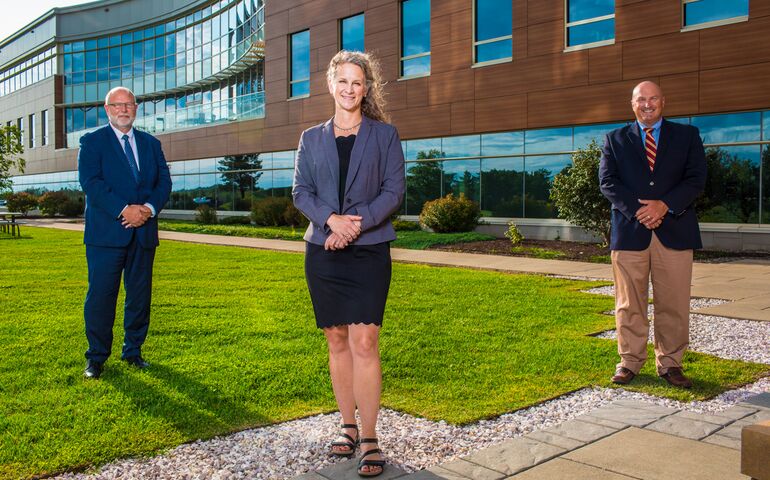 Photo / Jason Paige Smith
Dr. Ed Gilkey, left, Angela Fileccia and Paul Bolin were part of the Northern Light Health team that organized a webinar series to help employers understand how to safely return to business.
Photo / Jason Paige Smith
Dr. Ed Gilkey, left, Angela Fileccia and Paul Bolin were part of the Northern Light Health team that organized a webinar series to help employers understand how to safely return to business.
Split shifts, single-occupancy crew travel, constant communication between management and employees and improved technology — these are just some of the strategies deployed by employers as they work to maintain operations through the pandemic.
Those employers include health care providers, who have been able to work with businesses from both the health care and the employer perspectives. One of the biggest lessons the health care industry has discovered in the past six months is how to approach an ever-evolving situation.
“One thing we’ve learned is that from day to day or week to week, things can change and we need to adapt quickly,” says Paul Bolin, Northern Light Health’s chief human resources officer. “The best idea for businesses, in general, is to stay aware that things are changing.”
Northern Light is just one of the hospital systems or hospitals in Maine — from Mount Desert Island Hospital to MaineHealth to MaineGeneral — that moved quickly in the early stages of the pandemic to work with the business community to come up with guidelines to balance public health needs with those of customers.
Scramble for information
To help employers keep up and adapt, Northern Light Health has been hosting a Zoom conference series, called “Safe Return to Business.” From June through September, Northern Light held 14 webinars covering topics such as risk mitigation and critical infrastructure for safe operations, face coverings and screening for employees and customers and how to support employees’ needs as they return to work.
The series will continue through December, with the latest COVID-19 information, actionable information for business owners, and other health care areas that have been affected by the pandemic.
The series was designed early in the pandemic to address the general scramble for information, says Dr. Ed Gilkey, a senior physician executive with Northern Light Beacon Health, who has been moderating the series and comes at it with a business understanding thanks to his master’s degree in business administration.

Gilkey credits Ochsner Medical Center in New Orleans for hosting a similar series that inspired Northern Light’s. “If we think about March going into April, everyone was scrambling to become informed and understand what this pandemic is about,” he says.
The goal of the series is to arm employers with information on how to move forward safely in a rapidly changing situation.
“Back in April and May, many of us were staying up 16 hours a day to keep up,” Gilkey says. “We were getting information out of Italy. What are they learning in China? We were taking that information and putting it together and starting to be able to provide our business community with that information in an understandable way.”
Connecting with employers
Health care providers throughout Maine have shared resources and expertise based on state and federal Centers for Disease Control guidance and also promoted use of the Maine Department of Economic and Community Development’s COVID-19 prevention checklists, which provide guidance for businesses on how to operate safely and prevent the spread of the virus.
In addition to its Zoom series, Northern Light has pivoted its occupational health program, called Work Health, to help employers tackle new concerns around keeping their workforce safe and how to prepare for reopening.
The longstanding program has seven clinics across Maine. During the pandemic, activities have included helping employers with coronavirus testing.
“For example, we have a client where we’ve sent some Work Health folks to conduct COVID-19 testing at their locations,” Bolin says.
He adds, “Employers could experience some level of COVID-19 impact,” whether it’s an employee, an employee’s loved one or a customer becoming ill. “All of that is new to most employers. Work Health can provide guidance on what to do.”
Balancing demands
Elsewhere, Mount Desert Island Hospital in Bar Harbor started collaborating with the business community, particularly seasonal businesses that were struggling to figure out how balance public health needs with the those of their customers, says Art Blank, the hospital’s president and CEO.
In April, the hospital and Bar Harbor nonprofit Healthy Acadia convened the Downeast COVID-19 Task Force, which includes Jackson Laboratory, Acadia National Park, town and chamber of commerce leaders and state legislators. The group’s programs include a pilot asymptomatic testing program for front-facing employees and a facemask distribution program. Both call on the hospital’s ability to procure supplies.
“We provided technical support, through some of the public health oriented clinicians on our team, to discuss the best ways that businesses could mitigate the spread of the COVID-19 virus, assuming that we were going to have people visiting our communities — some coming without knowing that they were asymptomatic carriers,” Blank says. “We identified fairly early the need to provide education to businesses about the ways that front-facing employees could be best protected.”
MaineHealth, Maine’s largest health care system, has been routinely convening a group of CEOs with health providers who can answer questions and discuss issues, says Dr. Dora Anne Mills, the organization’s chief health improvement officer.
Detailed steps
Open communication in the workplace is essential, Mills says. She cites her own role as department head as an example. She’s continued to go to the office, but her nonclinical staffers have been working from home. Now she’s bringing back 25% at a time on a rotating basis. On a Zoom call, staffers asked how to plan for safely getting from home to office, and for operating in the office. Mills had developed her own routine, so she described details in an email.
“I walked through the steps I take every morning: When I have my coffee in the morning at home, I fill out the questions” on a screening app provided by the hospital, she says. “At work, I get out of the car, I put my mask on, I have my phone in my hand with the screening app showing, I keep my car keys in my hand because I use my car keys to push the button on the elevator. I explained all of this.”
The steps may seem mundane.
“But I realized, if you’re not used to that, you’re probably wondering, ‘When do I put my mask on? How do I juggle that with the phone?’” she says. “So I went through that step-by-step.”
Mental health
There’s also a mental health aspect to consider.
“Other crises have a pretty definitive end,” says Angela Fileccia, manager of Northern Light’s Healthy Life Resource Program. “If we were to have a big nor’easter, it’s pretty clear it’s coming, the storm happens, it’s done, we clean up and move on.”
The pandemic is different.
“We understand they’re working on a vaccine, but in terms of when we can expect things to resolve, that is completely unknown,” she says. “So it’s going to be important, to help individuals, businesses and the community writ large, to focus on how to increase resilience in this situation.”
Open lines of communication between employers and employees can help increase resilience, she says.
“It might be saying, ‘I’m not sure we have all the answers right now, let me tell you what we’re thinking, let me collect feedback from you all,’” she explains. “That’s a good way to provide a sense of control for folks. It allows people to be part of the process.”
Mills at Maine Health offers a similar assessment.
“I think recognizing that, even if you yourself have done well, that’s not been true for everyone,” Mills says. “Many people have been extraordinarily stressed and dealing with the stress in different ways. Addressing the emotional and mental stressors is important.”
Planning for uncertainty
How can employers think about operations as the pandemic continues?
“When people say, ‘Do you think it will be six months, nine months?’ I say, ‘We’re probably on a two-year program,” says Dr. Steve Diaz, chief medical officer at MaineGeneral Health in Augusta. “COVID-19 isn’t like previous novel outbreaks that were in distinct communities, they got it under control, and then it went away. This will live on, even with a vaccine, because it’s so ubiquitous.”
In this uncertain environment, experts advise employers to draft a plan, based on guidance and checklists, for the steps needed to ensure safe operations.
“The plan can just be a page,” Mills says. “It can be a playbook so they don’t have to figure things out on the fly.”
At the same time, says MDI Hospital’s Blank, employers should expect the plan to change.
“It’s a constant challenge to plan for change when the information and the science keep changing, because we keep learning more and more about this disease,” says Blank. “We need to plan because it takes time to make changes. But at the same time, we need to keep an eye on current guidance and how that might impact what we’re doing.”
Protections built into the workplace as a result of the health crisis will be a benefit into the future, he adds.
“Even when we have the vehicle for being able to call an end to this pandemic — and at some point, we expect it will be a vaccine — the reality is that there will be another one,” Blank says. “We are a much more mobile society today. These organisms continue to mutate and continue to advance. But we also know better and better how to deal with them. So it’s a matter of being vigilant and doing the things we need to do to have an environment that’s safe for everyone going forward.”





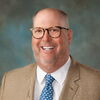
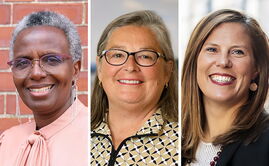

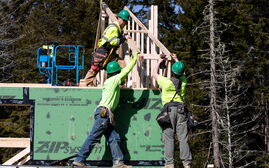





0 Comments